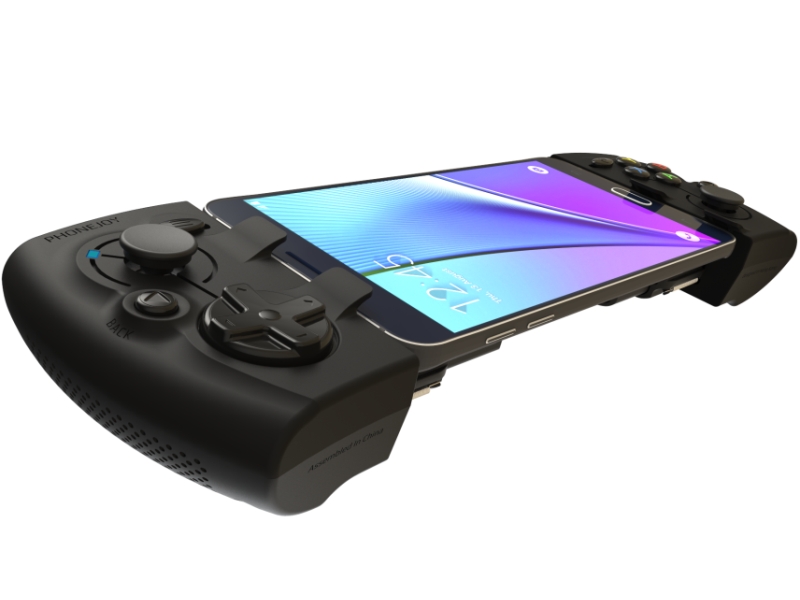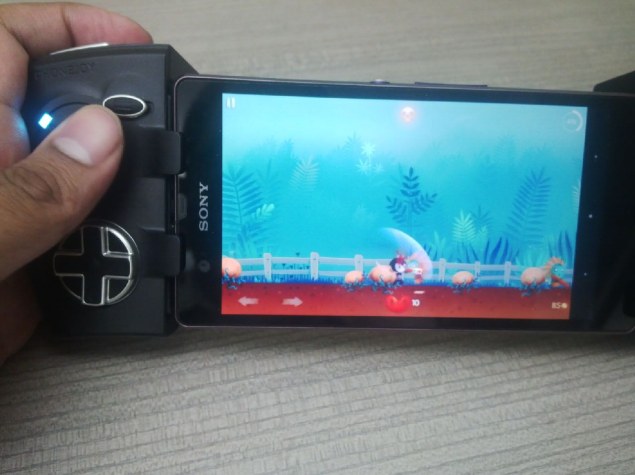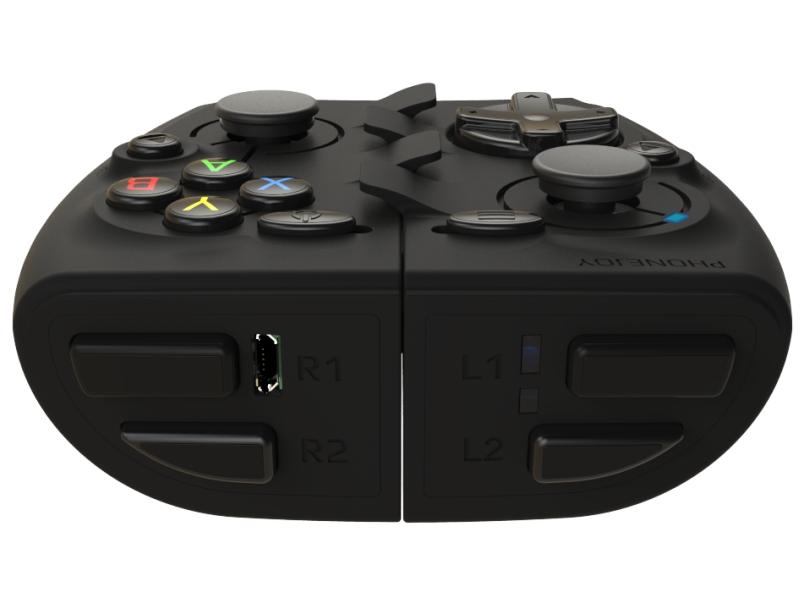The
name InFocus might ring a bell, as sure enough, you would have seen at
least one of its projectors in offices or in tech magazines by now.
It's an American company that's well known for video and
communications devices, and like most, has branched out into
producing smartphones as well. Its latest flagship, the M812,
launched
this week along with two more handsets. We'll be putting it through the grind today to see if
it's worth your time and money.
Look and feelThe
InFocus
M812 is the successor to the
M810, which the company
launched this July.
The new smartphone ditches the glass back of the M810 for a
unibody aluminium chassis. The result is quite brilliant as the phone
feels sturdy and very premium. On one hand, it looks very similar
to the
Apple iPhone 6 (
Review |
Pictures),
which is not necessarily a bad thing. It's not surprising at all when
you consider the original device manufacturer (ODM) for the phone is
Foxconn. To avoid
getting in hot water with the Californian tech giant, InFocus has added
some design elements such as a novelty 4G logo on the back, and
positioned the camera module in the center.

It's
a Dual-SIM phone and both slots sit on the right side. The SIM1
slot accepts a Micro-SIM but the second slot is a hybrid which will
either hold a Nano-SIM or a microSD card. You're more likely to use the
second slot for storage since there's only 16GB onboard. This isn't a
big deal if you aren't planning on using two SIMs but if you are, then
you'll be disappointed. There's also a notification LED hidden within
the earpiece grille.
The
power and volume buttons are on the left, which isn't the
most convenient of places. We would have liked it if the power button
had been on the opposite side which is much more common. The 3.5mm
headphone socket sits on the top while the Micro-USB port and speaker
grille are on the bottom.

Around
the back, we have the
13-meagpixel camera sensor, dual-LED flash unit, and the InFocus logo in
the middle. There's a sticker below this with the IMEI number and other
details which is quite an eyesore and ruins the otherwise sleek look.
The one on our unit started peeling from the edges within days, which is
not a good feeling when you hold the phone. There's a very prominent 4G
logo just below it, highlighting the phone's LTE capability.
Our review unit didn't come with any accessories but you
will get a headset, charger, cable and the manual in the retail box.
Overall, the InFocus M812 is a very striking phone to look at, backed by
superb build quality. It's fairly slim at 7.38mm, but a bit on the
heavier side. The smooth aluminium finish also makes a phone a bit
slippery.
Specifications and softwareThe InFocus M812 is
well kitted-out internally. You get a quad-core Snapdragon 801 SoC, 3GB
of RAM, 16GB of onboard storage, 4G LTE (for India too), Wi-Fi b/g/n/ac,
Bluetooth 4.0, FM Radio and USB OTG. Out of the two SIM slots, only SIM 1
supports LTE/3G connectivity while SIM2 is restricted to 2G. The
microSD card slot accepts capacities of up to 128GB. The
phone also has all the usual sensors including a proximity sensor,
an accelerometer, a compass, a magnetic sensor and a gyroscope.

The phone
comes with Android 5.0.2 along with a skin called InLife UI 2.0, which
is highly customisable. Long-pressing the home screen lets you choose
between a simplified layout - where there's no app drawer - or the traditional
setup. You can also toggle the ability to access the notification shade
by swiping down anywhere on the homescreen. This is very
useful on a 5.5-inch display.
The Display sub-menu in the
settings app
now has an option to enable a blue light filter. This lets you make the
display's colour balance much warmer, which can help prevent eye strain
over time. It's a very helpful feature,
especially if you use your phone to read eBooks a lot. The M812 also
supports motion gestures such as turning the phone over to mute a call
or
answering a call directly when you lift the phone to your ear.

InFocus
preloads many apps which could help you with productivity and getting
more standby time from the phone. The Backup tool lets you back up or
restore data and apps, App Traffic Controls lets you set which apps
can send data over 3G or Wi-Fi. Mobile Assistant lets your know how
many junk files can be cleaned and which apps are hogging the most
resources. Power Detective gives
you an in-depth look at your battery usage statistics. Other apps include WPS Office, Safebox (to lock
apps and files), the usual suite of Google apps. The interface is quite
responsive and uses up around 850MB of RAM, leaving you with 1.5GB free
on average.
PerformanceThe 5.5-inch HD IPS display packs
in a 1080x1920-pixel resolution and Corning's Gorilla Glass 3 for added
protection. Images appear sharp and vivid and the brightness levels are
very good for indoor use, although the screen tends to wash out slightly
under direct sunlight. Call quality is also good and the phone latched
on to 4G networks wherever available.

InFocus has added a
feature called 'NXP Smart Amp' to boost the audio levels. This only
works with the internal speaker however, and not the headphones. You can toggle
this feature from the notifications shade. Enabling it amplifies the
mid and low-range frequencies, but audio tends to distort at high volumes.
Media
playback performance
is very good, as the M812 handled our high bit-rate test file and other
1080p videos with ease. We found the audio quality to be very good,
though we used our own reference earphones since no headset was included
with our review unit. The phone didn't heat up much with ordinary usage
despite its all-aluminium
body, but it did get hot while gaming.
Coming to the
benchmarks, the
InFocus M812 scored 22,302 in Quadrant and 17,635 in 3DMark IceStorm
Unlimited. For some reason, AnTuTu kept causing the phone to shut down
mid-way through so we couldn't get a score. That doesn't bode well for
high-performance apps, but it could also be an issue with our review
unit. Overall performance
is good, just as you'd expect from the Snapdragon 801 chip, but we're
left a little unsure about the long-term prospects of using this phone,
considering that AnTuTu has run perfectly fine for us on hundreds of
other devices so far.


The
13-megapixel rear camera does a good job at close up shots, with decent
amount of depth of field. Landscapes pictures are also good, but details
aren't very distinct if you zoom in. The app interface is designed well
and is easy to use. You have a Mode button, which lets you change the
shooting mode. Apart from the usual suspects, you also get one called
Watermark, which adds a watermark to your image with the date, time
location and weather information. You can choose from nine different
styles.
You also get options to change the ISO, exposure, shutter sound,
and filters, all of which can easily be accessed from a vertical carousel
on the left. Low-light pictures are good but with some noise peppered
in the background. The dual-LED flash does a decent job of lighting close-up shots evenly.
Video recording is also handled well, with a
steady framerate. You can choose slow motion video, which limits
the resolution to 480p. The front-facing 8-megapixel camera is
very adept at capturing detailed selfies, partly thanks to the
large f/1.8 aperture.
 (Click to see full-size images)
(Click to see full-size images)
The InFocus M812 packs in a 2900mAh battery which
lasted for 11 hours and 48 minutes in our video loop test, which is
respectable. With regular usage, you can easily go a little more than a
day before you'll need to charge the phone.
VerdictThe
InFocus M812 will go on sale for Rs 19,999 from October 1 exclusively
on Snapdeal, though registrations have already begun. In this price
range, InFocus has their work cut out for them as they're up against the
formidable Motorola Moto X Play which has
proven to be the phone to buy for under Rs 20,000 right now.
The M812 will be a tough sell at its current price for this reason
alone.
Overall, InFocus has done a good job with the design and
performance of the M812 and if priced a little lower, could be a solid
contender.
The build quality and finish is very good and it doesn't hurt that it
looks Apple-ish, which we're guessing will appeal to many people. The
overall performance of the camera, processor and battery are good too.
The blue light filter feature is another feather in the M812's hat.
The one major issue we have is that it's not a true Dual-SIM phone so
if this is on the top of your list then you'll be torn between
having to use a second SIM and a microSD card.
An all-metal phone is
tough find in this price segment, which is where the M812 has a unique
advantage. However, when you factor in other things such as brand value,
timely software updates and long-term support, it's hard for a consumer not to go
with the tried and tested names in the industry.

InFocus M812 in pictures

 In our review of the original Phonejoy gamepad,
we'd noted that we really liked the little gamepad, and found it
comfortable to use with (and without) a phone. There were a few issues
though - the shoulder buttons were spongy, and the analog sticks were
too short to use comfortably, and worst of all, there were some pretty
serious compatibility issues.
In our review of the original Phonejoy gamepad,
we'd noted that we really liked the little gamepad, and found it
comfortable to use with (and without) a phone. There were a few issues
though - the shoulder buttons were spongy, and the analog sticks were
too short to use comfortably, and worst of all, there were some pretty
serious compatibility issues. The LG G3 just about fits into the Phonejoy Gamepad 2, though the
ideal size is a little smaller - around 5-inches. If your phone is
bigger than six inches then it won't fit in the controller - you'll have
to prop it up on a stand while gaming instead.
The LG G3 just about fits into the Phonejoy Gamepad 2, though the
ideal size is a little smaller - around 5-inches. If your phone is
bigger than six inches then it won't fit in the controller - you'll have
to prop it up on a stand while gaming instead. The overall experience of using the new Phonejoy Gamepad 2 is great,
and by now, the library of games that take advantage of this peripheral
also looks pretty good, over and above the ever present emulators. The
catch is the price - you can get a Phonejoy for $69.90 (approximately
Rs. 4,600); that's a high price considering that you can get a branded
gamepad like Amkette's for a little over half that price. On the other
hand, compared to Steelseries or Mad Catz, this feels like a steal.
The overall experience of using the new Phonejoy Gamepad 2 is great,
and by now, the library of games that take advantage of this peripheral
also looks pretty good, over and above the ever present emulators. The
catch is the price - you can get a Phonejoy for $69.90 (approximately
Rs. 4,600); that's a high price considering that you can get a branded
gamepad like Amkette's for a little over half that price. On the other
hand, compared to Steelseries or Mad Catz, this feels like a steal.







